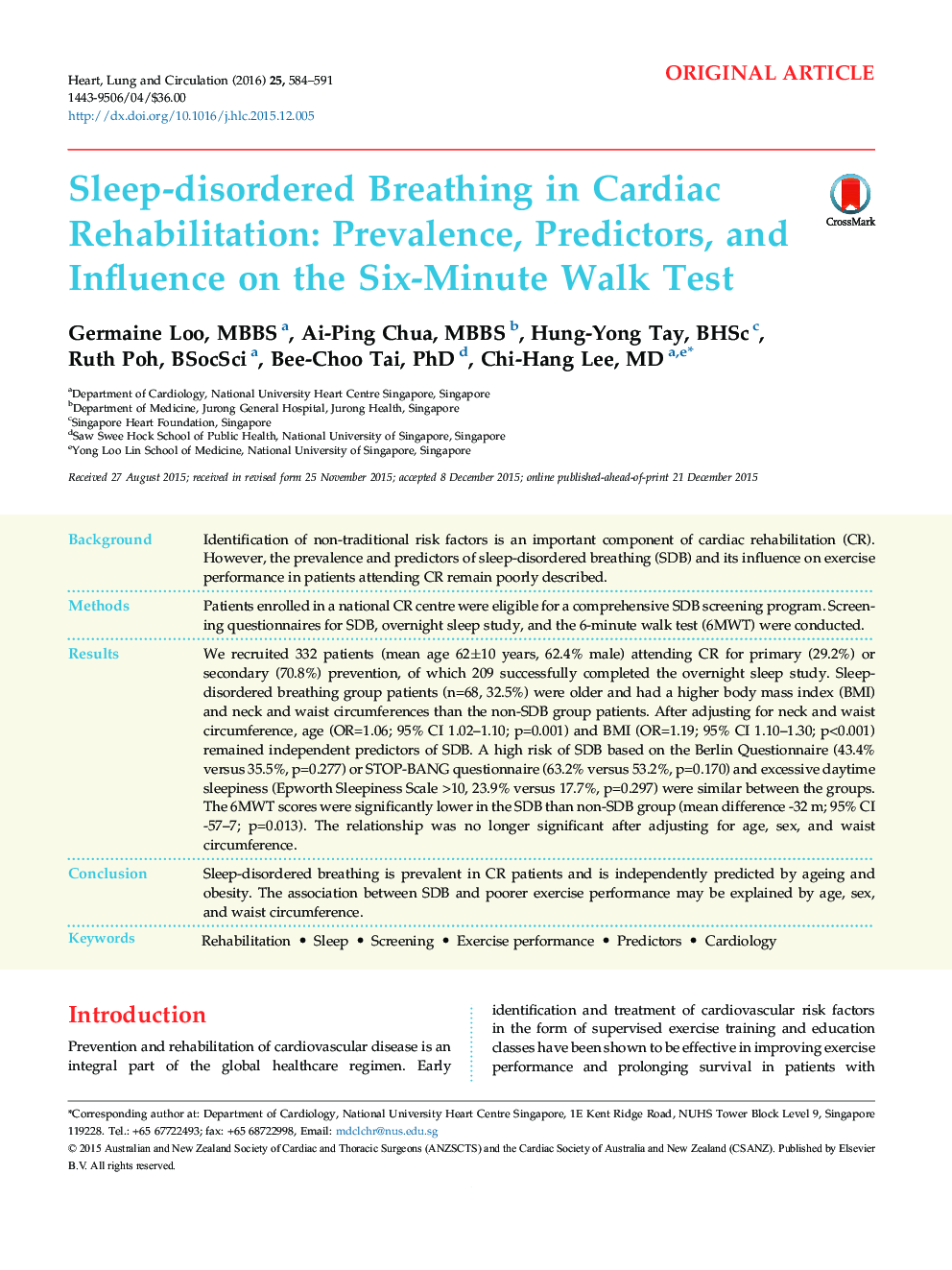| Article ID | Journal | Published Year | Pages | File Type |
|---|---|---|---|---|
| 2916865 | Heart, Lung and Circulation | 2016 | 8 Pages |
BackgroundIdentification of non-traditional risk factors is an important component of cardiac rehabilitation (CR). However, the prevalence and predictors of sleep-disordered breathing (SDB) and its influence on exercise performance in patients attending CR remain poorly described.MethodsPatients enrolled in a national CR centre were eligible for a comprehensive SDB screening program. Screening questionnaires for SDB, overnight sleep study, and the 6-minute walk test (6MWT) were conducted.ResultsWe recruited 332 patients (mean age 62±10 years, 62.4% male) attending CR for primary (29.2%) or secondary (70.8%) prevention, of which 209 successfully completed the overnight sleep study. Sleep-disordered breathing group patients (n=68, 32.5%) were older and had a higher body mass index (BMI) and neck and waist circumferences than the non-SDB group patients. After adjusting for neck and waist circumference, age (OR=1.06; 95% CI 1.02–1.10; p=0.001) and BMI (OR=1.19; 95% CI 1.10–1.30; p<0.001) remained independent predictors of SDB. A high risk of SDB based on the Berlin Questionnaire (43.4% versus 35.5%, p=0.277) or STOP-BANG questionnaire (63.2% versus 53.2%, p=0.170) and excessive daytime sleepiness (Epworth Sleepiness Scale >10, 23.9% versus 17.7%, p=0.297) were similar between the groups. The 6MWT scores were significantly lower in the SDB than non-SDB group (mean difference -32 m; 95% CI -57–7; p=0.013). The relationship was no longer significant after adjusting for age, sex, and waist circumference.ConclusionSleep-disordered breathing is prevalent in CR patients and is independently predicted by ageing and obesity. The association between SDB and poorer exercise performance may be explained by age, sex, and waist circumference.
